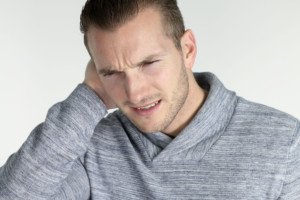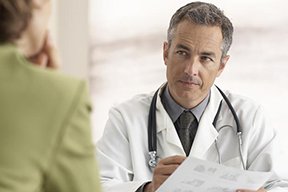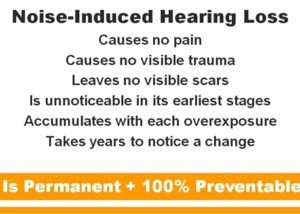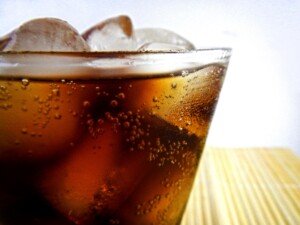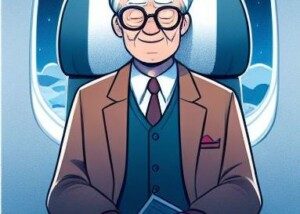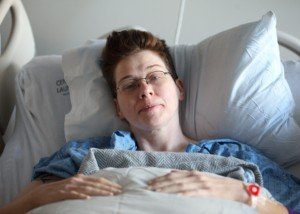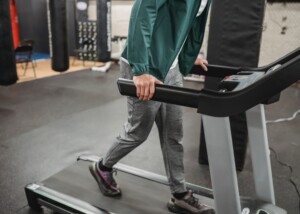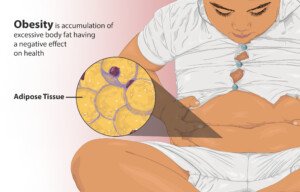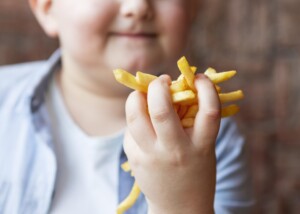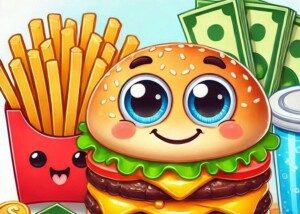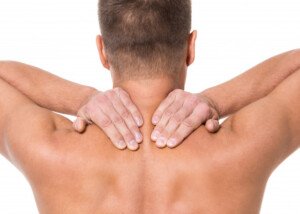Do You Have to Lose Your Hearing just Because You Get Old?
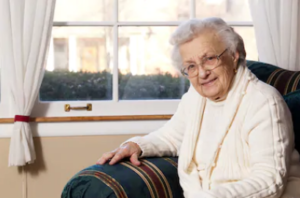
Is it possible to make it to old age and still have good hearing? And if so, what can you do while you’re still under 65 to preserve as much hearing as possible?
My elderly father has considerable hearing loss, and more than once he has admonished me with, “Wait till you’re my age, and we’ll see how well you can hear.”
About one-third of U.S. people between 65 and 74 has hearing loss, and about half over 75 have difficulty hearing, says the National Institute on Deafness and Other Communication Disorders.
“Contrary to belief, it is not normal to be wearing a hearing aid as you get older,” says Dr. Stacey Silvers, MD, of Madison ENT & Facial Plastic Surgery in NYC, who is board certified in otolaryngology (ear, nose and throat specialty).
“However, the longer we live, the more likely we will have some deterioration of all of our senses.
“Night vision, reading ability and hearing will decrease. Many even note a decrease in taste and smell. The two most common causes of hearing loss are genetics and noise exposure.”
My father has been exposed to lots of loud noise all his life, including church choirs that he conducted; using power tools in his basement machine shop; and setting the TV to very loud — louder than necessary for any hearing loss he may have had during those earlier years.
Some people just like a loud TV and music. But they’ll pay the price later.
Genetics load the gun, but lifestyle choices pull the trigger.
If one chooses to never wear ear protection in loud environments like ball games, movies and symphonies, then this will certainly kill off enough nerve cells in the ear to result in some hearing loss.
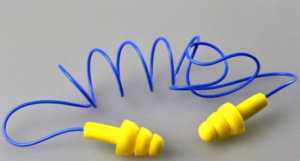
It’s important to know, however, that Dr. Silvers adds that some patients are predisposed to hearing loss, with or without external factors.
Which are you? Do you even know? So why take the chance by exposing your ears to unnecessary volumes?
By the time a person is old, he has decades of exposure to loud noise under his belt.
It’s no wonder that elderly people usually have some degree of hearing loss, enough to impede understanding conversations and requiring TVs to be quite loud.
Dr. Silvers continues, “If there is a family history of hearing loss (aunt, uncle, sibling or parent), some patients may also suffer the same misfortune losing hearing at a young age.”
Dr. Silvers adds that people with jobs in loud environments need to protect their ears from damage.
Acoustic trauma has permanent results. Ears do not toughen up with chronic exposure to loud noise. Nerve cells are not muscle cells.
I used to work at a major city newspaper and occasionally ventured into the printing press room.
The volume was deafening. I always wore ear muffs that cut out 25 decibels of volume.
I’d see pressmen standing right by the press machines without the ear muffs on! And no earplugs, either.
How often do you see construction workers with hearing protection? Ever see a motorcycle rider with earplugs?
Of course, what biker wants to be seen with earplugs? In their mind it’d make them appear weak.
But what a small price to pay for preventing hearing loss.
Hearing aids don’t make a man look tough. Nor does always asking people to speak up.
Dr. Silvers explains, “Excessive noise exposure over a short period of time will lead to an early deterioration of hearing in the higher frequencies.
“Over time our noise exposures, especially those in louder cities, will lead to a more rapid decrease in hearing than those with little to no noise exposure.
“I do agree that the less traumatic noise exposure we have, the better our hearing will be over the long-term.”
 An NYC expert in ear, nose and throat care, Dr. Silvers has been named among America’s Top Physicians and Surgeons in facial plastic surgery and otolaryngology numerous times since 2003. Dr. Silvers is an expert in the field of minimally invasive rhinology, resolving patients’ breathing and sinus problems with simple in-office procedures.
An NYC expert in ear, nose and throat care, Dr. Silvers has been named among America’s Top Physicians and Surgeons in facial plastic surgery and otolaryngology numerous times since 2003. Dr. Silvers is an expert in the field of minimally invasive rhinology, resolving patients’ breathing and sinus problems with simple in-office procedures.
 Lorra Garrick has been covering medical, fitness and cybersecurity topics for many years, having written thousands of articles for print magazines and websites, including as a ghostwriter. She’s also a former ACE-certified personal trainer.
Lorra Garrick has been covering medical, fitness and cybersecurity topics for many years, having written thousands of articles for print magazines and websites, including as a ghostwriter. She’s also a former ACE-certified personal trainer.
.
Top image: Shutterstock
Will Soda Hydrate You when Flying to Prevent a DVT?
A vascular surgeon comments about drinking soda on an airplane for hydration to help prevent a deep vein thrombosis.
Treadmill Workout for the Very Plus Size: Don’t Hold On

If you’re very plus size and trying to achieve goals by walking on a treadmill, did you know that holding on will interfere with your goals?
Why Overweight Kids SHOULD Be Put on a Diet
Many influencers proclaim that “no child should ever be put on a diet.”
Some even call this abuse. They believe children should be allowed to eat whatever and how much they want. (more…)
Is It Possible to Overdo Walking on a Treadmill Desk?
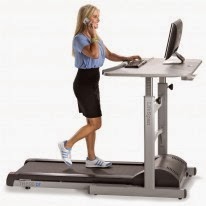
How much is too much walking on a treadmill desk?
Studies are mounting that excessive sitting throughout the day is bad for one’s health.
It seems as though the perfect solution is the treadmill desk, in which you walk in place of many of the hours normally spent sitting.
The standard treadmill desk goes only as fast as 4 mph.
Let’s assume that the user of this equipment feels fine and is not trying to walk through painful heels, for instance.
“It’s difficult to define what ‘too much’ is across the board because each person has a different posture, walking mechanics, response to multi-tasking, etc.,” explains James Buenaventura, physical therapist in Harbor City, CA, who specializes in outpatient orthopedics and sports medicine as well as home health.
DOMS
Buenaventura points out that a person may not even know they walked too much until after they exit the treadmill desk and are hit with delayed-onset muscle soreness (DOMS).
“We would change speeds on the treadmill (interval training) in order to increase cardiovascular endurance because mixing in the speeds changes the stress/strain on the cardiovascular system,” says Buenaventura.
For some people, a walk of 3.5 mph will get them breathing heavily. On the other hand, conducting work on a computer, while walking at this speed for sustained periods, is close to impossible; in my case, if for no other reason, this speed shakes the desk portion of the treadmill.
Many people are motivated to buy this device to avoid the hazards of prolonged sitting, which include an increased risk of blood clots in the lungs, says a report on the British Medical Journal web site.
Buenaventura notes, indeed, that “the primary function of the treadmill desk should be to decrease the incidence of circulatory and cardiovascular issues associated with being sedentary — such as sitting at a desk all day.
There may be some caloric burn and strength gains as secondary benefits, but a person should not use a treadmill desk if their primary goal is to lose weight.”
Is there a limit to how much a person should walk on a treadmill desk, even if their goal is to avoid the hazards of excessive sitting?
“If a person has properly acclimated to the treadmill desk and takes occasional rest/stretching breaks, I could see a person being able to make it through an entire 8-hour work day,” says Buenaventura, “but as I always tell my patients, ‘Let pain be your guide; if it hurts then stop doing it.’”
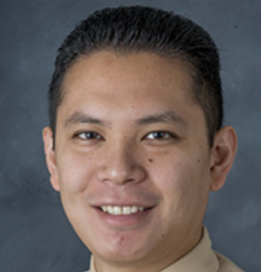 James Buenaventura, DPT, is a lecturer, consultant, speaker and a legislative advocate for physical therapy. He is a former private practice owner, former PTA program director for Stanbridge University, and former founding director for the physical therapy faculty practice at California State University, Long Beach.
James Buenaventura, DPT, is a lecturer, consultant, speaker and a legislative advocate for physical therapy. He is a former private practice owner, former PTA program director for Stanbridge University, and former founding director for the physical therapy faculty practice at California State University, Long Beach.
 Lorra Garrick is a former personal trainer certified by the American Council on Exercise. At Bally Total Fitness she trained clients of all ages for fat loss, muscle building, fitness and improved health.
Lorra Garrick is a former personal trainer certified by the American Council on Exercise. At Bally Total Fitness she trained clients of all ages for fat loss, muscle building, fitness and improved health.
Strength Training vs. Cardio Exercise for Low Back Pain
Which is better for low back pain: working out with weights or doing cardio exercise?
Low back pain is America’s No. 1 nonfatal health problem.
Training with weights is superior to aerobic exercise for the relief of back pain, says a study from the University of Alberta.
In the study, people participated in a 16-week exercise regimen using barbells, dumbbells and other strength training equipment.
Other subjects did aerobic exercise such as walking, jogging or using an elliptical machine.
Strength Training Wins Over Cardio at Reducing Back Pain
The strength training group experienced a 60 percent improvement with their low back pain situation, whereas the aerobic exercise group experienced only a 12 percent improvement.
- Cardio training works only the lower body.
- Strength training (depending on the specific exercise) works the whole body as an integrated unit.
The low back, in a sense, connects the lower body with the upper body.
By engaging both the top and lower part of the body in weight-bearing exercise, the patient with low back pain will see great improvements.
Strength training forces the low back to get stronger and become better at resisting fatigue.
Strength Training Exercises for Low Back Pain
“The biggest initiator of low back pain symptoms is postural malalignment,” says Melissa Franckowiak, MD, an anesthesiologist in Lockport, NY.
“Over time, it can lead to more severe anatomical problems like herniated discs, pinched nerves and facet joint arthritis.
“Muscle imbalance can be corrected with the correct core strengthening exercises, that you can then carry into your cardiac workouts for maximal endurance muscle strengthening.
“Without strengthening exercises, performing a lot of cardiac activity can exacerbate low back pain if it’s performed with the same postural imbalances that exist with the same day to day poor posture.
“Mini crunches that include small twisting motions (elbow toward the opposite knee) to work the internal and external obliques as well as the rectus abdominus through straight crunches provide core strengthening.
“Do a variety of mini crunches for 20 minutes twice a week. Vary the resistance with arm position. These are small movements. The low back never leaves the floor. Pause at the peak of the contractions.”

Crunches. Credit: George Stepanek
Additional Strength Training Exercises for Those with Chronic Low Back Pain
Bent-over dumbbell row, single arm. Start lightly and do eight to 12 reps.

Credit: George Stepanek
Lat pull-down. Keep your upper arms vertical at all times as you start with light weight. Tilt back only slightly.
Do not let the bar fly back up. Though this exercise does not engage the lower body, it’s a great one for the back.

Feel free to continue doing cardio for heart health, as long as it doesn’t aggravate your back pain.
If you use a treadmill, do not hold on other than for momentary balance checks.
Otherwise, holding on will skewer natural gait mechanics — which is bad for the back.
The study is reported in a 2009 issue of Journal of Strength and Conditioning Research.
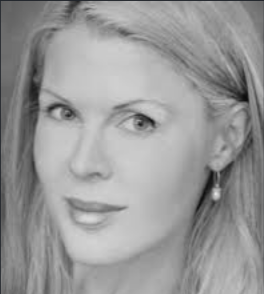 Dr. Franckowiak is the inventor of two patented medical devices and the CEO of Pneumaglide, providing airway solutions to the surgical services and emergency medical services communities. A fiction writer under the name of Melissa Crickard, she is the author of “The Labrador Response” and “Another Five Patients,” available on Amazon.
Dr. Franckowiak is the inventor of two patented medical devices and the CEO of Pneumaglide, providing airway solutions to the surgical services and emergency medical services communities. A fiction writer under the name of Melissa Crickard, she is the author of “The Labrador Response” and “Another Five Patients,” available on Amazon.
 Lorra Garrick has been covering medical, fitness and cybersecurity topics for many years, having written thousands of articles for print magazines and websites, including as a ghostwriter. She’s also a former ACE-certified personal trainer.
Lorra Garrick has been covering medical, fitness and cybersecurity topics for many years, having written thousands of articles for print magazines and websites, including as a ghostwriter. She’s also a former ACE-certified personal trainer.
.
Top image: ©Lorra Garrick
Source: sciencedaily.com/releases/2008/12/081211141848.htm
How Effective Is a Humidifier for Sinusitis?
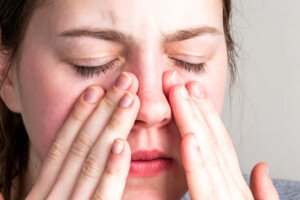
A humidifier is often recommended to people who suffer from sinusitis.
But how effective is a humidifier for the relief of sinusitis symptoms?
Symptoms include tenderness and pain around the eyes; nasal congestion; ear pain; sore throat; cough; nausea and headache.
“A humidifier alone will not cure a bout of acute bacterial sinusitis,” begins Stacey Silvers, MD, of Madison ENT & Facial Plastic Surgery in NYC, who is board certified in otolaryngology; one of her specialties is sinus surgery.
Acute sinusitis lasts less than 12 weeks.
After that period of time, if symptoms persist, then it becomes chronic sinusitis.
“For some it may relieve the severity of the symptoms,” continues Dr. Silvers in reference to a humidifier.
“For chronic sinus congestion and pressure, some may get relief with a humidifier and others will not.
“When a patient has associated nasal congestion they may then be breathing better through the mouth.
“The humidifier will act to moisten a dry throat and give relief. Nasally inhaled moisture may also loosen the thick congested mucous and help it clear better.”
 Dr. Silvers also points out that if the water in a humidifier is left stagnant, and the filter not cleaned, mold can grow and spread, making nasal issues even worse.
Dr. Silvers also points out that if the water in a humidifier is left stagnant, and the filter not cleaned, mold can grow and spread, making nasal issues even worse.
So make sure that the filter is cleaned daily and fresh water is always used.
What can cause sinusitis?
Infection (bacterial, viral or fungal) is the culprit.
The risk of developing sinusitis is heightened by the following conditions: gastroesophageal reflux disease, tooth infection, deviated nasal septum (the wall that is between the nostrils), nasal polyps, allergies and cigarette smoke.
Repeated micro-trauma to the nasal passages, such as from cleaning out the nose on a daily basis with an instrument such as a cotton swab, can result in irritated nerve endings or inflammation, leading to some sinusitis symptoms.
Besides using a humidifier to relieve the symptoms of sinusitis, there are other home remedies.
You can start by sleeping with your head elevated, to help drain the sinuses.
Another thing you can do is to rinse out your nasal passages with a neti pot or bulb syringe, as shown below in the image.
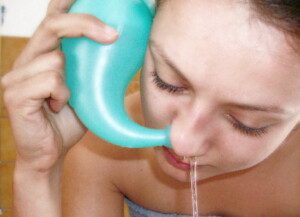
Nasal irrigation with a neti pot. Aikhan, CC BY-SA 3.0
For facial pain, place warm damp towels on your cheeks and around your eyes and nose.
 An NYC expert in ear, nose and throat care, Dr. Silvers has been named among America’s Top Physicians and Surgeons in facial plastic surgery and otolaryngology numerous times since 2003. Dr. Silvers is an expert in the field of minimally invasive rhinology, resolving patients’ breathing and sinus problems with simple in-office procedures.
An NYC expert in ear, nose and throat care, Dr. Silvers has been named among America’s Top Physicians and Surgeons in facial plastic surgery and otolaryngology numerous times since 2003. Dr. Silvers is an expert in the field of minimally invasive rhinology, resolving patients’ breathing and sinus problems with simple in-office procedures.
 Lorra Garrick has been covering medical, fitness and cybersecurity topics for many years, having written thousands of articles for print magazines and websites, including as a ghostwriter. She’s also a former ACE-certified personal trainer.
Lorra Garrick has been covering medical, fitness and cybersecurity topics for many years, having written thousands of articles for print magazines and websites, including as a ghostwriter. She’s also a former ACE-certified personal trainer.
.
Top image: Shutterstock/ natali_ploskaya
Sources:
mayoclinic.com/health/chronic-sinusitis/DS00232/DSECTION=symptoms
mayoclinic.com/health/acute-sinusitis/DS00170
mayoclinic.com/health/acute-sinusitis/DS00170/DSECTION=causes
mayoclinic.com/health/acute-sinusitis/DS00170/DSECTION=lifestyle-and-home-remedies
sciencedaily.com/releases/2011/10/111006154904.htm
Joint Aches from Microscopic Colitis: Should You Work Out?
If you have an extra-intestinal symptom of microscopic colitis—notably, the joint aches—here is your information about exercise.
Though not a leading symptom of microscopic colitis, joint aches definitely do make the list of symptoms.
My first flare-up was in late April of 2010, and a few weeks later, after a colonoscopy, I was officially diagnosed.
I had joint aches during that first flare-up. I never recorded the duration, though, but I estimate it was a few weeks. The diarrhea and abnormal stools took about two months to completely go away.
Despite the joint aches and diarrhea, I continued doing heavy and intense weightlifting — which I’ve been doing for years. However, I need to be very clear on something.
During this initial flare-up, the joint aches weren’t bad enough to keep me home or inactive.
They were annoying, even very bothersome at times, but didn’t interfere with my productivity.
They felt like PMS, but PMS joint aches usually stop within 24 hours of the first day of flowing.
My joint aches (low back, ankles, wrists, neck) persisted through a menstrual period and beyond. (I’d later get them again after completing menopause—felt like PMS).
When the microscopic colitis joint aches were mild, I’d work out at the gym: heavy, hard, intense. In fact…strength training SUPPRESSES these symptoms!
Cardio is another story.
It may depend on personal preference, but when I had joint aches from microscopic colitis (and PMS for that matter, as they feel exactly the same), I simply could not do cardio.
The “cannot” has to do with will and comfort level, not physiologic interference of the MC.
It’s just that the idea of running, hiking or stepping while experiencing this kind of sensation in my low back, ankles (and often upper legs) is very unappealing — yet at the same time, I psychologically can tolerate the idea of bench pressing, deadlifting, leg pressing and squatting.

Freepik.com/master1305
Again, it may boil down to personal preference. In fact, I embrace heavy, intense weight workouts, but often perceive cardio as a drudgery, no matter HOW I’m feeling.
If you’re a cardio-oriented person who happens to have joint aches with your microscopic colitis, you may find cardio to be a breeze nevertheless, and even a suppressor of your MC symptoms — while at the same time, find the idea of lifting barbells and dumbbells very unwelcome.
 Lorra Garrick has been covering medical, fitness and cybersecurity topics for many years, having written thousands of articles for print magazines and websites, including as a ghostwriter. She’s also a former ACE-certified personal trainer.
Lorra Garrick has been covering medical, fitness and cybersecurity topics for many years, having written thousands of articles for print magazines and websites, including as a ghostwriter. She’s also a former ACE-certified personal trainer.
.
Top image: Freepik/KamranAydinov
Is a Treadmill Desk for Computer Work Good Cardio Exercise?

How does the consistent use of a treadmill desk stack up against typical cardio or aerobics workouts?
The treadmill desk is gaining momentum as a means of getting healthier and lowering the risk of various ailments, particularly type II diabetes, heart disease and low back pain.
I own a treadmill desk. I now have two treadmills in my home, and the original one (for cardiovascular exercise) still gets used: for cardio sessions.
Treadmill Desk vs. Conventional Cardio Exercise
If you’ve been using (or intend on using) a treadmill workstation for several hours a day, this will not — I repeat — will not replace any structured aerobics routines you’ve already been doing.
Take it from me, a former personal trainer, but also use your common sense when considering this comparison.
In fact, the purpose of a treadmill desk is to prevent the hazards of prolonged sitting, rather than induce a cardiovascular training effect in the body.
This is clear when you consider the speed that people use treadmill desks:
The devices aren’t even designed for jogging, with their fastest speed being 4 mph.
Typically, the user walks very, very slowly. Even a highly fit person will find it difficult to sustain a walk faster than 3 mph while working at a computer.
A sustained 3 mph walk at a 15 percent incline (my treadmill desk goes up to 15 percent) is an excellent aerobics workout.
Problem is, unless you’re not “working” at the computer, and instead watching a long YouTube video so that your hands are freed up, this kind of pace is very unrealistic for someone simultaneously trying to do heavy office work with a keyboard and mouse.
If your office work consists of mostly reading and scrolling with only light typing and mouse movements, you can simultaneously do light cardio work.
But once you’re huffing and puffing, you’ll find that high volume typing just isn’t possible.
You may be walking for two hours nonstop on your treadmill desk while typing up reports, searching the Web, reading and replying to e-mails, etc., but the walk will be way too slow to induce a training effect on your cardiorespiratory system.
But just because there won’t be a cardio effect, doesn’t mean there won’t be other potent effects, namely, keeping you safe from the harm of excessive sitting.
Other benefits await the faithful treadmill desk user: extra calorie burn, alleviation of chronic low back pain, lower blood pressure.
But again, don’t think that five hours a day on a treadmill desk will make you more fit for pickup basketball games, tennis matches, hikes or hilly bike rides.
Using a treadmill desk doesn’t mean give up the step aerobics, brisk walks on the school track, neighborhood jogs or other aerobics sessions, including on cardio equipment.
 Lorra Garrick is a former personal trainer certified through the American Council on Exercise. At Bally Total Fitness she trained women and men of all ages for fat loss, muscle building, fitness and improved health.
Lorra Garrick is a former personal trainer certified through the American Council on Exercise. At Bally Total Fitness she trained women and men of all ages for fat loss, muscle building, fitness and improved health.
One Ear Hurts Only when Burping: Logical Cause
